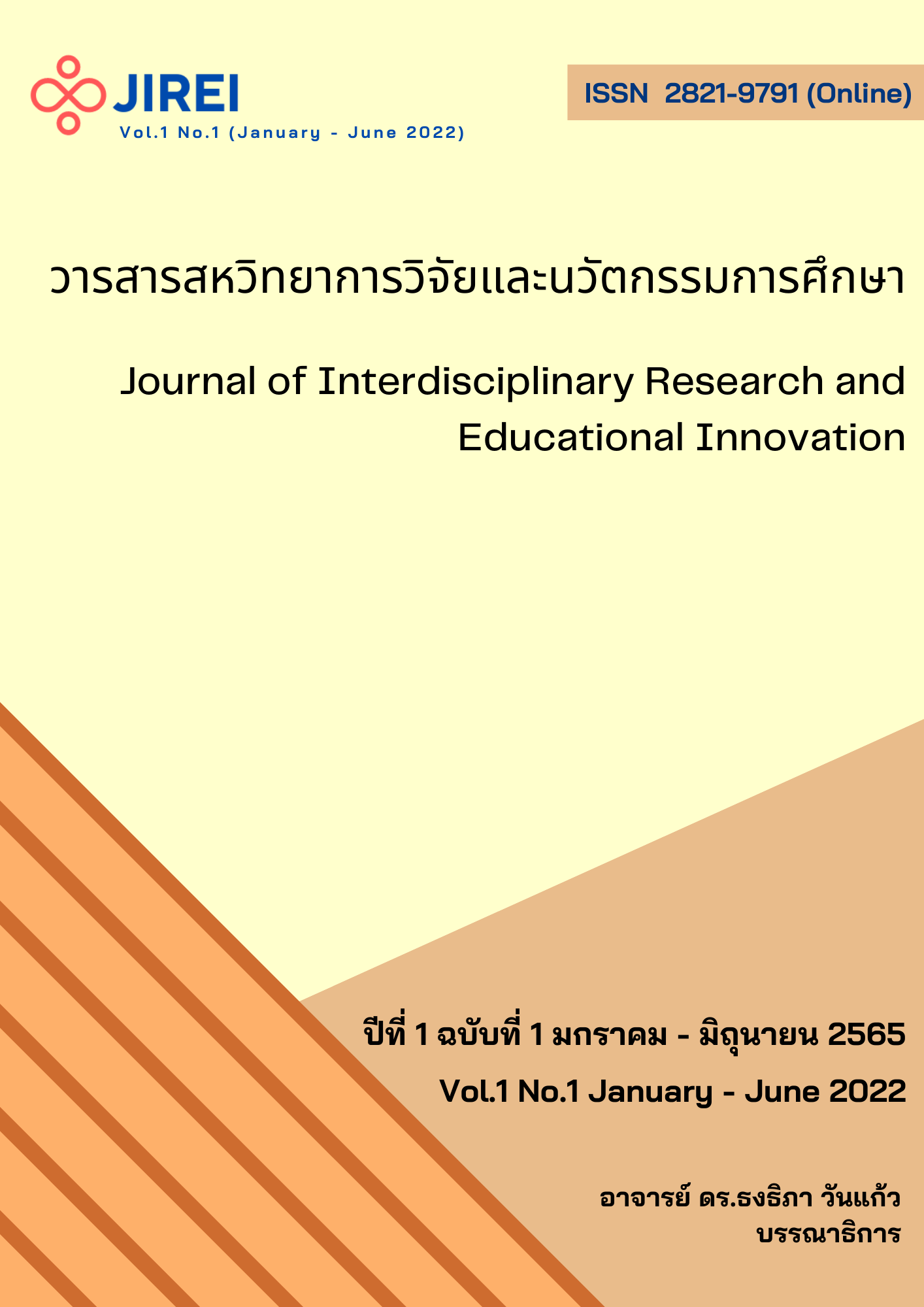Developing a virtual experience model in learning to use Photoshop CC tools
Keywords:
Augmented Reality, Photoshop program, InteractivityAbstract
This research aims to 1) analyze and synthesize the virtual experience model development in learning how to use the tools in Photoshop CC, 2) evaluate the confidence of the students who use the developed model prior to the actual use of the tools, and 3) evaluate the satisfaction of the students towards the use of the developed model. The sample consists of 28 first-year students from the Multimedia Technology program at Sripatum University, Khonkaen Campus. The sample group size was determined using Krejcie and Morgan formula with a reliability of 95 percent and a margin of error of 5 percent from a total of 30 students. The tools used in this research consist of 1) a virtual experience model for learning how to use the tools in Photoshop CC, 2) an evaluation form of students’ confidence prior to the actual use of the tools, and 3) an evaluation form of students’ satisfaction in using the model.
The research result shows that:
1) The system’s development will affect students’ learning by supporting users to see the suggestions and videos for easier understanding. The system also helps users to learn from different locations freely and encourages learning, which will help boost their confidence when they work using the actual program.
2) The evaluation of students’ confidence from using the model prior to the actual work resulted in a high average score (x ̅= 3.63) with the average score of reliability between 3.15 – 4.00. Post experiment shows a high average score (x ̅ = 4.12) and the average reliability score between 3.85 – 4.38, a high increase of 0.49 in terms of the average confidence score.
3) Students’ satisfaction was at a high level (x ̅= 4.57). When considering each aspect, two aspects showed a high satisfaction score: the learning development aspect (x ̅= 4.67) and the usage aspect (x ̅= 4.58).
References
ธานินทร์ ศิลป์จารุ. 2549. การวิจัยและวิเคราะห์ข้อมูลทางสถิติด้วย SPSS. กรุงเทพฯ: บริษัทวี อินเตอร์พ
ริ้นท์.
ธันยา นวลละออง และนงลักษณ์ ปรีชาดิเรก. (2558). การสร้างเกมการเรียนรู้สามมิติเพื่อเสริมสร้างทักษะ
ภาษาอังกฤษตามทฤษฎีพหุปัญญาของนักเรียนผ่านเทคโนโลยี Augmented Reality. ICT Silpakorn Journal,2(1),11-27.
ธีรเดช บุญนภา และคณะ. (2558). การพัฒนาสื่อการเรียนการสอนด้วยเทคโนโลยีความเป็นจริงสริมแต่งบน
ระบบปฏิบัติการแอนดรอยด์. The 3 rd ASEANUndergraduate Conference in Computing (AUC2)
พรทิพย์ ปริยวาทิตและวิชัย นภาพงศ์.(2559). ผลของการใช้บทเรียน Augmented Reality Code เรื่อง
คำศัพท์ภาษาจีนพื้นฐานสำหรับนักเรียนชั้นประถมศึกษาปีที่ 3โรงเรียนเทศบาล 2 วัดตานีนรสโมสร.วารสารวิทยบริการ มหาวิทยาลัยสงขลานครินทร์, 27(1), 9-17.
ประสาท เนืองเฉลิม. (2556). วิจัยการเรียนการสอน. กรุงเทพฯ: สำนักพิมพ์แห่งจุฬาลงกรณ์มหาวิทยาลัย.
มานพ สว่างจิตและไพฑูรย์ ศรีฟ้า.(2557).การพัฒนาสื่อความจริงเสมือนวิชาวิทยาศาสตร์ โรงเรียนที่มี
ผลสัมฤทธิ์ต่ำกว่าเกณฑ์มาตรฐาน สังกัดสำนักงานเขตพื้นที่การศึกษาประถมศึกษานครนายก.
สาขาวิชา เทคโนโลยีและสื่อสารการศึกษามหาวิทยาลัยเกษตรศาสตร์
เลขะวัฒนะส. (2017). Creativity Development of The Student with Augmented Reality by Active Learning. Journal of Roi Et Rajabhat University, 12, 65-73.
อนัน วาโซะ. (2564). Photoshop CC 2021 Basic Retouch : ฉบับมือใหม่หัดแต่งภาพ. นนทบุรี:
สํานักพิมพ์บริษัท ไอดีซี พรีเมียร์ จำกัด
Chang, Y. S., Hu, K. J., Chiang, C. W., & Lugmayr, A. (2020). Applying mobile augmented reality
(AR) to teach interior design students in layout plans: Evaluation of learning effectiveness based on the ARCS model of learning motivation theory. Sensors (Switzerland), 20(1).
Fernández-Enríquez, R., & Delgado-Martín, L. (2020). Augmented reality as a didactic resource
for teaching mathematics. Applied Sciences (Switzerland), 10(7).
Kokaew, U. (2015). Design and Development of an Integrated Online System Support for
C/C++ Programming. Science & Technology Asia, 2015, 47-58.
Lombardi, D., Shipley, T. F., Bailey, J. M., Bretones, P. S., Prather, E. E., Ballen, C. J., … Docktor,
J. L. (2021). The Curious Construct of Active Learning. Psychological Science in the Public Interest, 22(1), 8–43.
O’Connor, M. et al, (2021). 3D virtual reality simulation in radiography education: The
students’ experience. Radiography, 27(1), 208–214.
Prommapun, B. (2019). A Quality Evaluation of Electronic Media Used for Instructional
Development of English, Science, and Mathematics Courses in Schools under the Office of the Basic Education Commission. Sripatum Review of Humanities and Social Sciences, 19(1), 7-18.
Trivedi, N. K., Anand, A., Sagar, P., Batra, N., Noonia, A., & Kumar, A. (2022). A Systematic
Review of Tools Available in the Field of Augmented Reality. Journal of Cases on Information Technology, 24(4).
Wiwat Meesuwan. (2018). ความสัมพันธ์ระหว่างพฤติกรรมการอ่านกับผลสัมฤทธิ์ทางการเรียนที่เรียนด้วย
หนังสือการ์ตูนร่วมกับเทคโนโลยีออกเมนเต็ดเรียลลิตี (THE RELATIONSHIP BETWEEN STUDENTS’ READING BEHAVIORS AND LEARNING ACHIEVEMENT UPON A COMIC BOOK WITH AUGMENTED REALITY). JOURNAL OF EDUCATION NARESUAN UNIVERSITY, 21(1), 220-234.





